Kyoritsu 2431 Handleiding
Kyoritsu
Multimeter
2431
Bekijk gratis de handleiding van Kyoritsu 2431 (4 pagina’s), behorend tot de categorie Multimeter. Deze gids werd als nuttig beoordeeld door 95 mensen en kreeg gemiddeld 4.8 sterren uit 48 reviews. Heb je een vraag over Kyoritsu 2431 of wil je andere gebruikers van dit product iets vragen? Stel een vraag
Pagina 1/4

Jaw Trigger
Range Switch
Data Hold Button
Transformer Jaws
Display
Frequency Selector Switch
INSTRUMENT LAYOUT
Barrier
INSTRUCTION MANUAL
DIGITAL AC LEAKAGE CLAMP METER
KEW SNAP 2431
KEW SNAP
SERIES
1.SAFETY WARNINGS
This instrument has been designed and tested according to IEC
Publication 61010; Safety Requirements for Electronic Measuring
Apparatus.This instruction manual contains warnings and safety rules
which must be observed by the user to ensure safe operation of the
instrument and retain it in safe condition. Therefore, read through these
operating instructions before using the instrument.
#
W
W
W
WARNING
ARNING
ARNING
ARNINGWARNING
* Read through and understand instructions contained in this
manual before starting using the instrument.
* Save and keep the manual handy to enable quick reference
whenever necessary.
* The instrument is to be used only in its intended applications.
* Understand and follow all the safety instructions contained in
the manual.
Failure to follow the instructions may cause injury, instrument
damage and/or damage to equipment under test. Kyoritsu is by
no means liable for any damage resulting from the instrument
in contradiction to this cautionary note.
The symbol
#
indicated on the instrument means that the user must
refer to related parts in the manual for safe operation of the instrument.
Be sure to carefully read instructions following each
#
symbol in this
manual.
#
DANGER
DANGER
DANGER
DANGER
DANGER is reserved for conditions and actions that are
likely to cause serious or fatal injury.
#
W
W
W
WARNING
ARNING
ARNING
ARNING
WARNING is reserved for conditions and actions that can
cause serious or fatal injury.
#
CAUTION
CAUTION
CAUTION
CAUTION
CAUTION
is reserved for conditions and actions that can
cause injury or property damage.
Following symbols are used on the instrument and in the instruction
manual. Attention should be paid to each symbol to ensure your safety.
#
Refer to the instructions in the manual.
This symbol is marked where the user must refer to the instruction
manual
so as not to cause personal injury or instrument damage.
Indicates an instrument with double or reinforced insulation.
Indicates that this instrument can clamp on bare conductors when
measuring a voltage corresponding to the applicable Measurement
category, which is marked next to this symbol.
Indicates AC (Alternating Current).
#
DANGER
DANGER
DANGER
DANGERDANGER
* Never make measurement on a circuit above 300V AC. The
instrument is designed for measurement on a low-voltage circuit
below 300V AC.
* Do not attempt to make measurement in an explosive
atmosphere
(
i.e. in the presence of flammable gasses or fumes,
vapor or dust
)
.
* The transformer jaws are made of metal and their tips are not
insulated. Be especially careful about the hazard of possible
shorting where equipment under test has exposed conductive
parts.
* Never attempt to use the instrument if the instrument or your
hand is wet.
* Do not exceed the maximum allowable input value of any
measurement range.
* Never open the battery compartment cover when making
measurement.
* Never try to make measurement if any abnormal conditions,
such as broken Transformer jaws or case is noted.
* The instrument is to be used only in its intended applications or
conditions. Otherwise, safety functions equipped with the
instrument doesn’t work, and instrument damage or serious
personal injury may be caused.
*
Keep your fingers and hands behind the barrier during
measurement.
#
W
W
W
WARNING
ARNING
ARNING
ARNINGWARNING
* Never attempt to make any measurement if the instrument has
any structural abnormality such as cracked case and exposed
metal part.
* Do not install substitute parts or make any modification to the
instrument. Return the instrument to Kyoritsu or your distributor
for service and repair to ensure that safety features are
maintained.
* Always switch off the instrument before opening the battery
compartment cover for battery replacement.
#
CAUTION
CAUTION
CAUTION
CAUTIONCAUTION
* Make sure that the range switch is set to an appropriate
position before making measurement.
* Be sure to set the range switch to the OFF position after use.
When the instrument will not be in use for a long period of
time, place it in storage after removing the batteries.
* Do not expose the instrument to the direct sun, extreme
temperatures or dew fall.
*
Use a damp cloth and detergent for cleaning the instrument.
Do not use abrasives or solvents.
Measurement categories (Over-voltage categories)
To ensure safe operation of measuring instruments, IEC 61010
establishes safety standards for various electrical environments,
categorized as O to CAT IV, and called measurement categories.
Higher-numbered categories correspond to electrical environments with
greater momentary energy, so a measuring instrument designed for CAT
III environments can endure greater momentary energy than one
designed for CAT II.
O : Circuits which are not directly connected to the mains power
supply.
CAT II : Primary electrical circuits of equipment connected to an AC
electrical outlet by a power cord.
CAT III : Primary electrical circuits of the equipment connected directly
to the distribution panel, and feeders from the distribution
panel to outlets.
CAT IV : The circuit from the service drop to the service entrance, and
to the power meter and primary overcurrent protection device
(distribution panel).
O: Device which is
not directly
connected to the
mains power supply
Data Hold mode indicator
Unit of measured quantity
Low battery indicator
Frequency response of 50/60Hz
Frequency response of WIDE
2.FEATURES
* Digital clamp meter designed for measurement of AC leakage current.
* Tear-drop-shaped jaws for ease of use in crowded cable areas and
other tight places
* Data hold function to allow for easy readings in dimly light or hard-to-
read locations
* Filter function to remove harmonics generated by such equipment as
inverters
* Automatic power-off function to extend battery life
* Designed to CAT 300V and pollution degree specified by the Ⅲ 2
international safety standard,IEC 61010-1.
3.SPECIFICATIONS
Ranges
Accuracy
Frequency Selector Switch
WIDE position 50/60 position
20mA 0 19.99mA〜
± ±2.0%rdg 4dgt( )50/60Hz
± ±5.0%rdg 6dgt( 〜 )40 400Hz
± ±3.0%rdg 5dgt
( )50/60Hz
200mA 0 199.9mA〜
200A
0 100.0A〜
100.1〜
199.9A
± ±5.0%rdg 4dgt( )50/60Hz
± ±5.0%rdg 5dgt
( )50/60Hz
Overrange Indication '1' flashes on the highest digit :
Response Time :Approx. 2 seconds
Sample Rate Twice per second:
Location for us :
Indoor use, Altitude up to 2000m
Data Hold For all ranges:
Storage Temperature & Humidity : −10-50 , relative humidity up ℃
to 75%( )without condensation
Operating Temperature & Humidity: 0-40 , relative humidity up to ℃
85%( )without condensation
Power Source Two LR-44 or SR-44 batteries:
Current Consumption Approx. 5mA:
Battery Life : Approx. 15 hours in continuous
use
Auto Power Off : Automatically turns off approx.
10 minutes after power-on.
Safety Standards : IEC 61010-1 CAT III 300V
Pollution degree 2
IEC 61010-2-32:
EMC Standards IEC 61326-1:
Environmental standards EU RoHS Directive compliant:
Overload AC300A for one minute:
Withstand Voltage 3470V AC for 5 seconds :
between electrical circuit and
housing case
Conductor Size Approx. 24mm in diameter:
Dimensions 149: (L)×60(W)×26( )D mm
Weight Approx.120g: ( )battery included
Accessories : Instruction Manual, Two LR-44
batteries Carrying Case
4.OPERATlNG INSTRUCTIONS
4
−
1 AC Current Measurement
AC Current Measurement
AC Current Measurement
AC Current MeasurementAC Current Measurement
#
DANGER
DANGER
DANGER
DANGERDANGER
* Never use the instrument on a circuit above 300V AC.
* The transformer jaws are made of metal and their tips are not
insulated. Be especially careful about the hazard of possible
shorting where equipment under test has exposed conductive
parts.
* Do not attempt to make measurement with the battery
compartment cover removed from the instrument.
* Keep your fingers and hands behind the barrier during
measurement.
Barrier: It is a part providing protection against electrical shock and
ensuring the minimum required air and creepage distances.
#
CAUTION
CAUTION
CAUTION
CAUTIONCAUTION
* The transformer jaws, especially their tips, have been precisely
adjusted to obtain maximum accuracy. Take sufficient care to
avoid shock, vibration or excessive force when handling the
instrument.
* The transformer jaws do not fully close when a foreign
substance is stuck in the jaw tips or they do not properly engage
due to the excessive force applied. In such a case do not
release the jaw trigger suddenly or attempt to close the
transformer jaws by applying external force. Make sure that the
jaws close by themselves after removing the foreign substance
or making them free to move.
* The maximum size of a conductor to test is approx. 24 mm in
diameter. An accurate measurement cannot be made when the
transformer jaws are not fully closed on a conductor larger than
24mm.
* When measuring a large current, the transformer jaws may
buzz. This is not a fault nor affect the accuracy of the instrument.
(1) Set the range switch to a desired range. (Make sure that current to
measure does not exceed the upper limit of the range.)
(2) For normal measurement(Fig.1), press the jaw trigger to open the
transformer jaws and clamp onto one conductor only. Earth leakage
current and small current that flow through a grounded wire can also
be measured by this method. It is recommended that the conductor
is placed at the center of the closed transformer jaws.
(3) To measure out of balance leakage current(Fig.2), clamp onto all
conductors except a grounded wire. The leakage current measured
will be indicated on the display.
In a 4-wire system, clamp onto
all 4 wires.
In a 3-wire system, clamp onto all
3 wires.
Three-phase, 3-wire systems Single-phase, 2-wire systems
Fig. 1 Normal Measurement
Fig.2 Out-of-balance Leakage Current Measurement


4−2 How to Use Frequency Selector Switch
How to Use Frequency Selector Switch
How to Use Frequency Selector Switch
How to Use Frequency Selector SwitchHow to Use Frequency Selector Switch
AC current to measure may have harmonics or high frequency
components generated by such equipment as inverters. To eliminate
these superimposed components and measure only the fundamental
frequency of 50Hz or 60Hz, Model 2431 has a low pass filter circuit,
which can be activated by setting the frequency selector switch to the
'50/60Hz' position.
The low pass filter has a cut-off frequency of 100Hz and an attenuation
characteristics of approx. -24dB/octave. When the filter is disabled,
'WIDE' is shown on the display. Pressing the frequency selector switch
enables the filter, indicating '50/60Hz' on the display. Press the switch
again to exit the '50/60Hz' mode.
All renges at WIDE Position
All ranges at 50/60Hz Position
(ー24dB/oct)
0
-10
-20
40 50 60 100 200 300 400 500 1K 2K
5
10
20
30
50
100
Fregue n cy [ H z ]
Pe r centag e (% )
At tenuat ion( dB)
Model 2431 Frequency characteristics is as shown below.
Fig.3
Note:
Note:
Note:
Note:Note:
-24/octave means that the magnitude of a signal declines by a factor of
16 when its initial frequency doubles.
The frequency selector switch has the following two positions.
WIDE(40Hz -):Covers a wide range of frequency band from mains
supply to high frequencies generated by such equipment as inverters.
50/60Hz(40 - Approx. 100Hz Filter out high frequency components to ):
restrict measurement in mains frequency band.
Recently there has been increased usage of power through inverters,
switching regulators, etc. When high frequency noise from such
appliances leaks or flows into the ground through capacitors not filtering
completely, the earth leakage breaker may trip. In such a case, the
instrument may not give current readings with the frequency selector
switch set to the 50/60Hz mode. Therefore, when in doubt as to the
presence of high frequencies or harmonics that affect AC leakage
current measurements, take current readings with the switch set to the
50/60Hz and WIDE modes respectively and then compare the results
obtained
4
−
3 Data Hold
Data Hold
Data Hold
Data HoldData Hold
(1) Push the Data Hold switch to freeze the reading. The 'H' symbol is
shown on the display, indicating that the instrument is in the Data
Hold mode.
(2) Push the switch again to exit the Data Hold mode.
4
−
4 Auto Power Off
Auto Power Off
Auto Power Off
Auto Power OffAuto Power Off
In approx. 10 minutes after it is turned on, Model 2431 automatically
turns power off and the display goes off. To exit the power-off state, turn
the range switch to the OFF position, then back to any desired range.
5.BATTERY REPLACEMENT
When the display blanks or symbol "BATT" appears in the left lower
corner of the display, replace the batteries.
#
DANGER
DANGER
DANGER
DANGERDANGER
Never replace the batteries while making measurement.
(1) Set the range switch to the OFF position.
(2) Press in the hole on the battery compartment cover with the tip of a
pointed object, then slide open the cover.
(3) Replace the two batteries with new ones, observing correct polarity.
Replacement batteries should be type LR-44 or SR-44.
*
The instrument does not operate if the polarity is set reversely.
(4) Slide the battery compartment cover in place.
This marking means they shall be sorted out and collected as
ordained in DIRECTIVE 2006/66/EC.
This directive is valid only in the EU. When you remove
batteries from this product and dispose them, discard them in
accordance with domestic law concerning disposal. Take a
right action on waste batteries, because the collection system
in the EU on waste batteries are regulated.
This instrument satisfies the marking requirement defined in
the WEEE Directive (2002/96/EC). This symbol indicates
separate collection for electrical and electronic equipment.
6-22 92-1470B
DISTRIBUTOR
MEMO
MEMO
MEMO
MEMOMEMO
MEMO
MEMO
MEMO
MEMOMEMO MEMO
MEMO
MEMO
MEMOMEMO
Kyoritsu reserves the rights to change specifications or designs
described in this manual without notice and without obligations.
Product specificaties
| Merk: | Kyoritsu |
| Categorie: | Multimeter |
| Model: | 2431 |
Heb je hulp nodig?
Als je hulp nodig hebt met Kyoritsu 2431 stel dan hieronder een vraag en andere gebruikers zullen je antwoorden
Handleiding Multimeter Kyoritsu

1 December 2024

1 December 2024

1 December 2024

5 Januari 2024

5 Januari 2024

5 Januari 2024

5 Januari 2024

5 Januari 2024

4 Januari 2024

4 Januari 2024
Handleiding Multimeter
- Chauvin Arnoux
- Weltron
- IWH
- Clas Ohlson
- Proline
- Gembird
- Testboy
- Digitus
- Megger
- Milwaukee
- EMOS
- Digi-tool
- Workzone
- Keithley
- PeakTech
Nieuwste handleidingen voor Multimeter
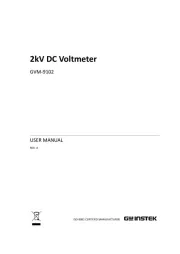
8 September 2025
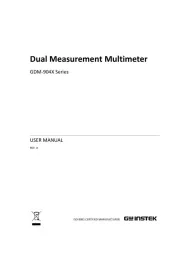
8 September 2025
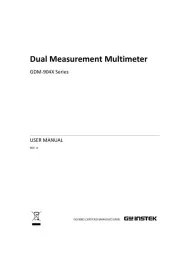
8 September 2025
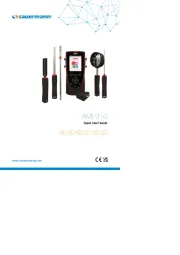
1 September 2025
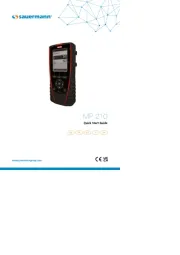
1 September 2025
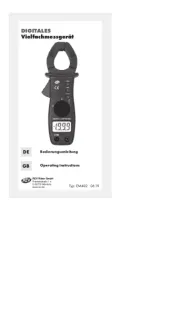
30 Augustus 2025
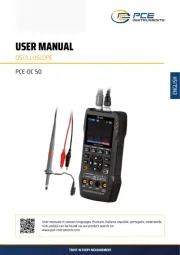
25 Augustus 2025
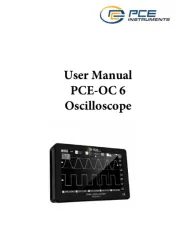
25 Augustus 2025
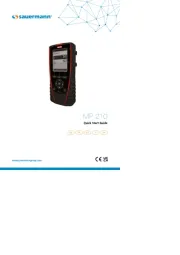
14 Augustus 2025
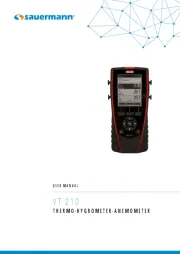
14 Augustus 2025